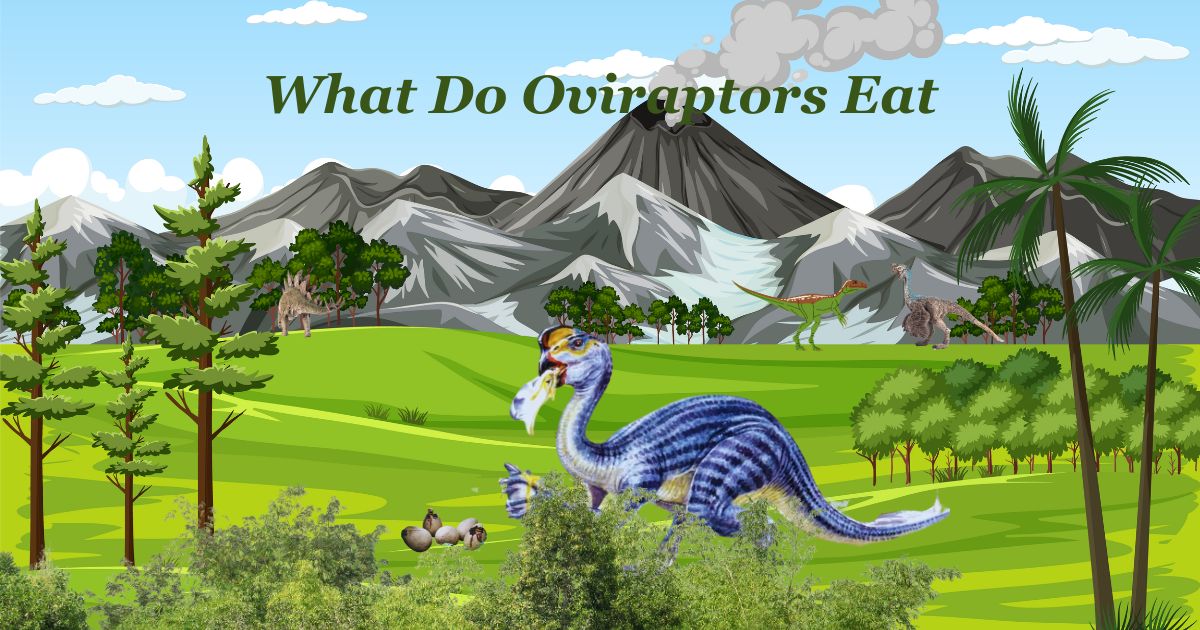What Do Oviraptors Eat? An Insight into Their Diet

Introduction
When we dive into the fascinating world of dinosaurs, Oviraptor stands out because of its unique title and fascinating history. The term “Oviraptor” refers to “egg predators”, a title given under the misinterpretation that these animals were egg predators. In any case, later revelations have challenged this, revealing a more complex picture of their dietary tendencies. In this article, we investigate the address: What did Oviraptors eat? We aim to provide a comprehensive understanding, engaging with the latest logical discoveries to satisfy your interest and upgrade your knowledge of these ancient creatures.
Understanding Oviraptors
Some time recently we jump into their slim down, let’s get it who Oviraptors were. Living amid the late Cretaceous period, Oviraptors were generally little dinosaurs, characterized by their bird-like bills and need of teeth. This special physical highlight has driven researchers to guess almost their eat less and nourishing habits.
The Slim down of Oviraptors
So, what do Oviraptors eat? The reply isn’t as direct as one might think. At first accepted to bolster on eggs due to the fossilized remains found close their skeletons, encourage inquire about has painted a diverse picture. Here are the key components of an Oviraptor’s diet:
Plants and Seeds
The bill of an Oviraptor recommends a eat less that seem effectively oversee difficult objects, like seeds. Numerous paleontologists accept that these dinosaurs were fundamentally herbivores or omnivores, with a noteworthy portion of their slim down comprising of plant fabric and seeds. Their bills were flawlessly adjusted to break open seeds or natural products, making them productive foragers of plant-based food.
Eggs: Myth or Reality?
Whereas the introductory revelation of Oviraptor fossils close egg homes driven to the conviction that they devoured eggs, it’s presently thought that these dinosaurs were really guarding their claim eggs, not taking them. In any case, it’s not completely rejected that Oviraptors might have eaten eggs, whether from other species or those that were unfertilized or deserted inside their possess species. This plausibility includes an omnivorous angle to their count calories, in spite of the fact that it’s not considered the primary food source.
Little Creatures and Insects
Another component that might have been included within the Oviraptor count calories is little creatures and creepy crawlies. Given their deftness and the structure of their bills, it’s conceivable that they may capture and devour little vertebrates, creepy crawlies, or other spineless creatures. This would supplement their eat less, particularly in terms of protein admissions, supporting the hypothesis that Oviraptors were not entirely herbivores.
Dietary Adaptations
The physical adjustments of Oviraptors give understanding into their dietary propensities. Their beaks, void of teeth, were likely utilized to smash and expend hard-shelled nourishment things, such as seeds. Furthermore, their moderately little estimate and spry nature would have made them capable at scavenging for a assortment of nourishments, from plants to conceivably little animals.
The Part of Environment
The environment in which Oviraptors lived too played a critical part in their eat less. Tenants of what is presently Asia, these dinosaurs lived in regions that were likely wealthy in vegetation and little fauna. The accessibility of different nourishment sources might clarify the shifted eat less that Oviraptors might have had, permitting them to adjust to diverse nourishment availabilities.
FAQs for What Do Oviraptors Eat? An Insight into Their Diet
Did Oviraptors eat meat?
Whereas it’s conceivable that Oviraptors devoured little creatures or creepy crawlies, there’s no concrete prove to classify them as strict carnivores. They are more likely to have been omnivores or basically herbivores.
How do we know what Oviraptors ate?
Researchers think about the physical structure of Oviraptors, such as their snouts and the fossilized substance found in areas they occupied, to create taught surmises almost their count calories. Besides, the think about of their living situations provides clues approximately the potential nourishment sources accessible to them.
May Oviraptors have been scavengers?
It’s a plausibility. Given their dietary adaptability, Oviraptors might have rummaged for eggs, plants, or indeed carcasses, depending on the accessibility of nourishment sources in their environment.
Result
Finding out what Oviraptors ate opens a window into the complex and fascinating world of dinosaur biology. From being mislabeled as egg hoodlums to possibly being modified low-eating herbivores, Oviraptors have energized the nature of paleontological inquiries and our understanding of ancient life. . As science progresses, we unravel the mysteries surrounding these ants